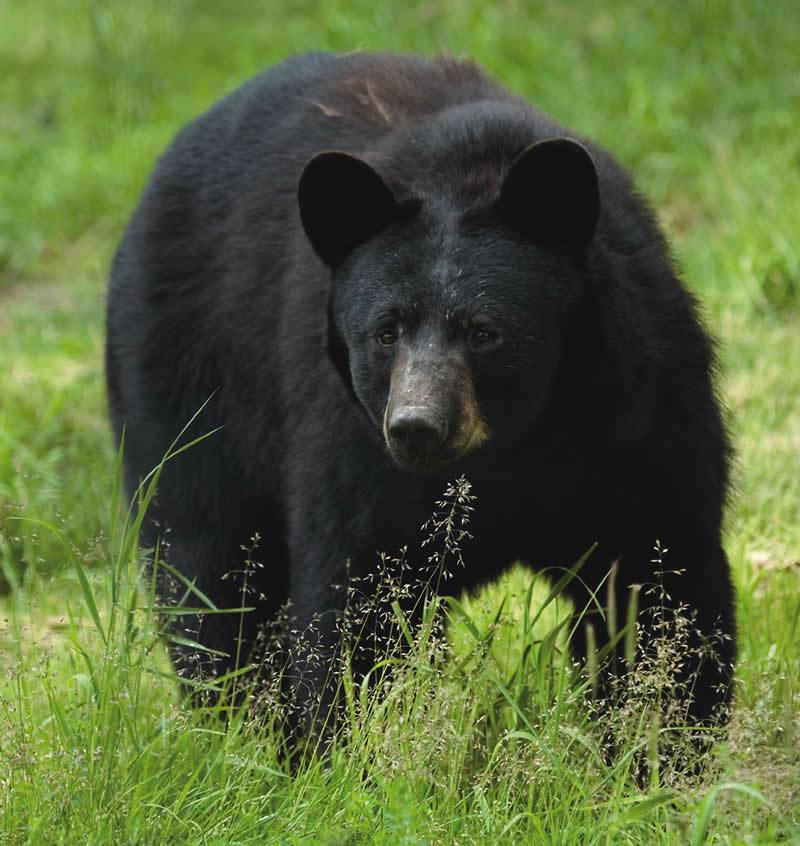
New Jersey gets a lot of attention for its annual bear hunt, which wrapped up last week with 464 kills. But that's just one of the ways the state's wildlife officials are managing the bear population year round. Bears have turned up in every county in the state, including a few blocks from the George Washington Bridge — and there are an estimated 3,200 bears in Northwestern Jersey alone.
Patrick Carr is considered the state's top bear expert as the Supervising Wildlife Biologist for New Jersey's Division of Fish and Wildlife. He spoke to Morning Edition Host Soterios Johnson about what the state is learning about its bear population.
Now that the bear hunt is over, what have you learned about what's happening with the bear population in New Jersey?
The bear population in New Jersey has been increasing in the last 30 years, and this bear season that we’ve implemented has been designed to reduce and stabilize the bear population in a lower level.
I understand you use GPS and other technology to track bears all year. Tell us about that.
We use the most advanced GPS technology right now. We fix a radio collar to a bear and they wear them very well, just like dogs wearing a collar. We put the radio collar on the bear as we’re doing our biological data collection and release the bear. These collars are communicating with GPS satellites and providing us with information on habitat use and movements. And what we’re finding is that bears are using these wetland corridors in New Jersey. New Jersey’s done a tremendous job in the last 30 years of protecting wetland corridors and those areas around wetlands.
I understand you do end up letting the bears go in a lot of cases when you trap them. Why is that? Is it so you can track them?
As part of our management, we provide relief to homeowners suffering from bear damage and bear nuisance. So one of our objectives is to capture a nuisance bear that’s in the garbage or grills or bird feeders or neighborhoods, capture that bear, have the homeowner remove the attractant and have the area not so desirable to a bear because you remove the food and we’ll use diversive conditioning techniques on that bear to get it out of those neighborhoods. We track these bears afterwards to see where it goes after the homeowner removes the attractant. What we found is they’re omnivorous. They go and they find other food sources, so New Jersey has a big education program to try and reach as many neighborhoods and communities as possible to remove food attractants.
Is the management plan working? There’s a story this morning out that a cable TV repairman in Hopatcong found a 550-lbs. bear in the basement of a house that was being lived in. He wasn't injured, but are there fewer bear-human encounters in New Jersey?
That’s what our objective is: it’s to reduce the number of bear-human interactions. We have a multifaceted, multi-tooled management strategy. Education is part of it. We destroy dangerous bears, those bears that are actually killing livestock and causing agricultural damages and breaking into homes.
This particular bear was a bear that had made a den in this unfinished basement and we get about two or three of those every year, where the bear is either under a deck. It’s not causing any damage. It just found that spot as its place where it’s going to spend the winter. So our wildlife biologist went in there yesterday and used a dart to immobilize the bear and then we moved it to a suitable habitat, not in that neighborhood. And that bear will go find another den, hopefully in a rock cavity or a brush pile, something more suitable for bears and less suitable for people.
And you’re saying the management plan is working? That there are fewer bear-human encounters?
The management plan is working because we kill dangerous bears for one thing. We have this big education program for another thing, using our law enforcement to stop people from illegally feeding bears and by reducing our overall bear population, we’ve reduced the number of complaints and also hunters are killing nuisance bears. Based on our tag returns, those bears that we’ve released after being in damage and nuisance situations are showing up in the harvest. Hunting is a safe, legal use of the resource. We would much rather a hunter shoot the bear, take it home, eat it and put a momento on the wall, rather than our wildlife technicians and biologists kill a bear and then put it in the incinerator.
With Tracie Hunte
